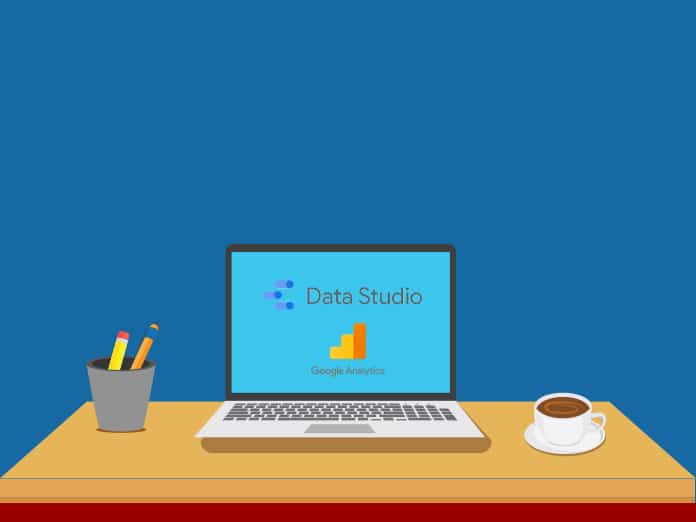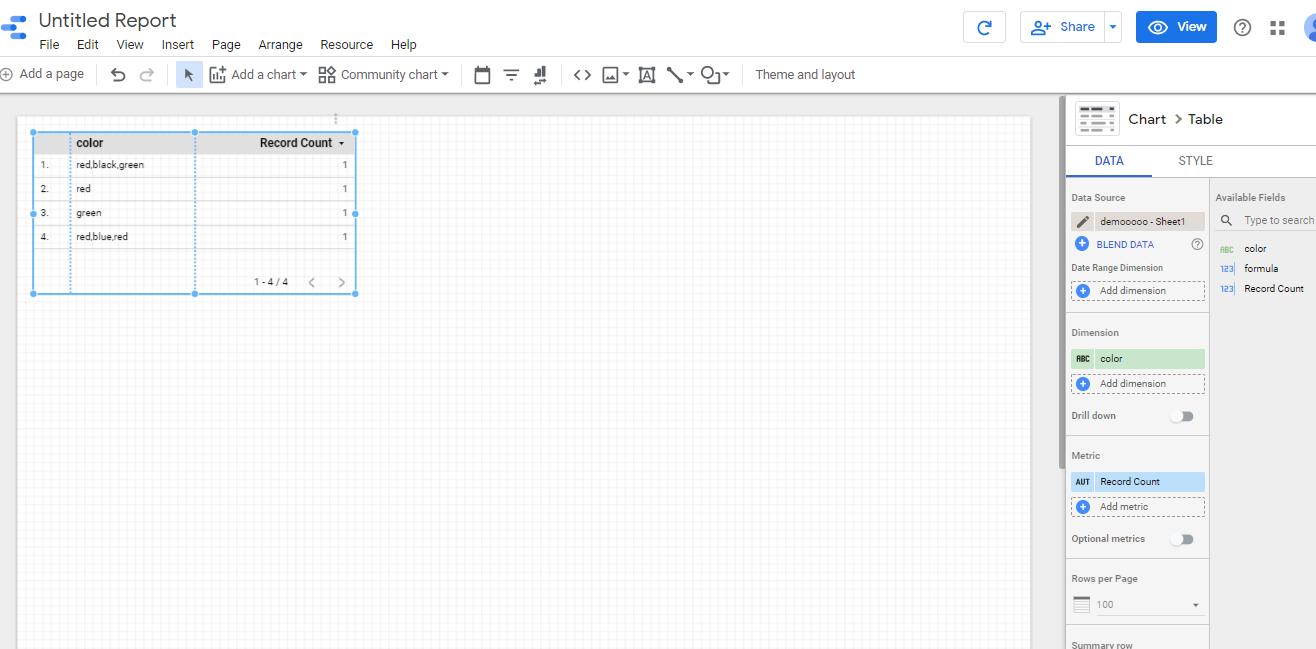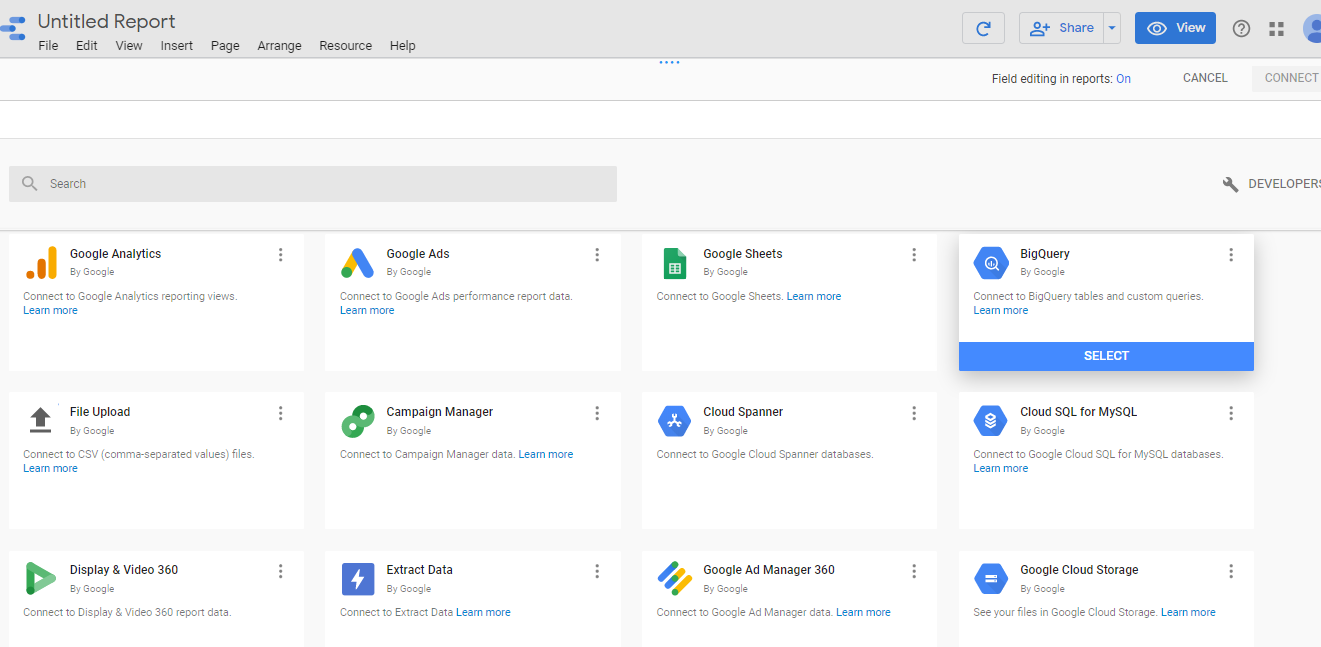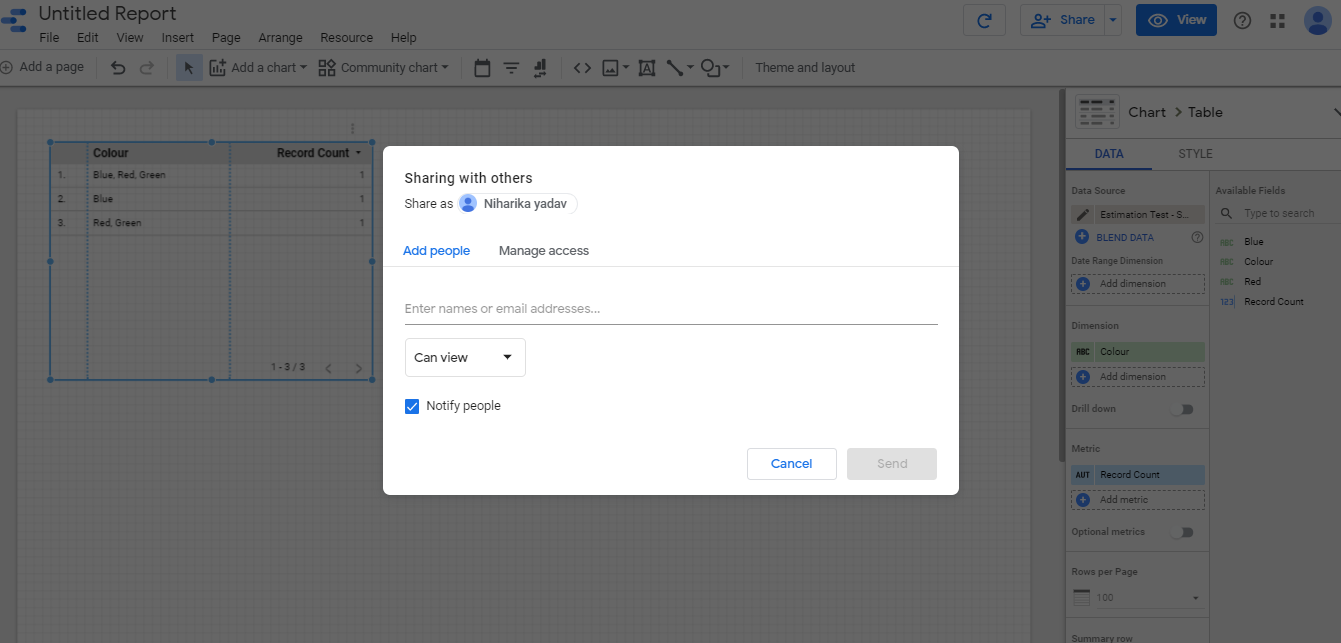Google Data Studio gives you all that you have to transform your customer’s investigation information into enlightening, straightforward reports through information perception.
The reports are anything but difficult to peruse, simple to share, and even adjustable to every one of your customers. You can choose how you need to show the information—reference charts, outlines, line diagrams, etc. You can even change text styles and hues and brand the reports with your logo.
Jump to Section
Data Studio Can Pull Data from Different Sources
One thing that is cool about Data Studio is that you can pull in something other than Google Analytics information. In essence, you can even import Facebook information, as long as you put that data into a Google Sheet. (Any reporting data you have on a Google Sheet can be maneuvered into Google Data Studio—and your lovely reports!) If you can get your information into Google Sheets, it can appear in your reports.
The reports are additionally unique, so when there’s an update to the information source, the refreshed/new data naturally appears on any reports that reference the source. Moreover, the reports are shareable, so you can concede individuals’ authorization to see the reports as well as enable them to make changes.
Google Data Studio utilizes similar usefulness as Google Docs and Google Sheets, so you should simply press the “Offer” catch to let your customers or different colleagues or alter the reports.
Reasons for Using Data Studio with Google Analytics
Are you sick of wrangling the data from Google Analytics into reports and dashboards? Do you spend hours uploading, filtering, and formatting your data? Would you like to spend less time building reports and more time seeking insights?
If you replied “yes” to either of these questions, Google Data Studio is for you! Here are seven reasons that you should use Data Studio with Google Analytics:
1. It’s Free and Now Boundless!
Information Studio is free for everybody, and you would now be able to make and share the same number of reports as you need!
Before this, it was free; however, you could just make five reports. Today, Google removed the five report limitation, and access is presently boundless.
2. Customize the Appearance of Your reports and Dashboards
- Data Studio offers you a blank canvas where you can create single-page dashboards or multi-page reports. There are no set column sizes or areas of the widget. You can drag and drop objects anywhere on the canvas.
- The arranging and style choices enable you to coordinate your association’s marking and hues. This makes it simpler to make proficient looking reports for administrators, chiefs, and officials in your association.
- The basic outlines give a higher number of alternatives to imagine information than is accessible inside Google Analytics. You can look over the bar, line, pie, and zone diagrams, scatterplots, slug charts, and geo maps. Each graph takes just a couple of snaps to make.
3. Join Information from Various Perspectives and Sources
- One constraint of review information inside Google Analytics is that it is doubtful to consolidate information from numerous perspectives or properties on a similar dashboard. In Data Studio, you can set the information source independently for each diagram. This lets you arrange information from any number of perspectives on a similar dashboard.
- Information Studio has an assortment of information connectors, notwithstanding Google Analytics. You can acquire information legitimately from AdWords, DCM (DoubleClick Campaign Manager), BigQuery, or YouTube. You can interface with MySQL or Cloud SQL databases. Or then again, you can utilize the Google Sheets connector to get to any information that can be transferred as a CSV or spreadsheet document, such as an online life or call focus information.
- There are multiple connectors that can be connected to Google Data Studio as data sources (for reference, please find connectors in below-attached image)
4. Create Calculated Dimensions and Metrics
- Is your page information divided by URL parameters, login tokens, or other “clamor” that makes numerous columns for a similar page in GA? Utilizing determining fields in Data Studio, you can tidy up and total your page information retroactively. (Note that you should recalculate any proportion or normal measurements like bounce rate and avg. session duration.)
- Determined fields can likewise be utilized to clean up conflicting effort parameters, for example, upper and lowercase renditions of a similar medium (for example email, Email, EMAIL)
- A determined field can be utilized to make a modified channel gathering. At present, there are restrictions on where you can use custom channel groupings inside Google Analytics, and they can’t be removed through the API. In Data Studio, you can utilize a CASE capacity to determine every one of the principles for your ideal custom gathering.
- What’s more, you can make determined measurements in Data Studio without being constrained to just a specific number for each View.
5. Break The 12-Widget Limit
Google Analytics enables you to include a limit of 12 gadgets to a dashboard. With Data Studio, you can include the same number of graphs and tables as your heart wants!
6. Share Reports Easily
- Much the same as a Google Doc, you can share a Data Studio report with anybody by sending them a connection. You can likewise impart reports to explicit individuals and set View, and Edit consents in like manner.
- Users who want to connect with Google Analytics data no longer need to sign in to Google Analytics to learn which reports to use to find the data to address their questions. Once you’ve defined the questions you want to be answered frequently, create reports that will support you consistently, with traditional filters and breakdowns that are important to you. We will help you set up.
7. Avoid GA Reporting API Restrictions
The Google Analytics API constrains you to 7 measurements and 10 measurements in a solitary API demand. Since Data Studio doesn’t utilize the API, you don’t need to stress over this point. When you associate with your GA property, you will approach the entirety of your GA information without a moment’s delay.
Final Words
They say that the best time to start using Data Studio was 9 months ago. The second best time to start using it is today.
So what are you waiting for? Come and start your journey with Loginworks Softwares. We will transform your data into interactive dashboards.
Let us know if there are any specific aspects of Data Studio that you would be interested in for consultancy or project needs.
- What Products Should You Sell on Amazon? - November 18, 2020
- 10 Reasons Why You Should Start Selling on Amazon - October 22, 2020
- Comparative Study of Top 6 Web Scraping Tools - September 3, 2020




